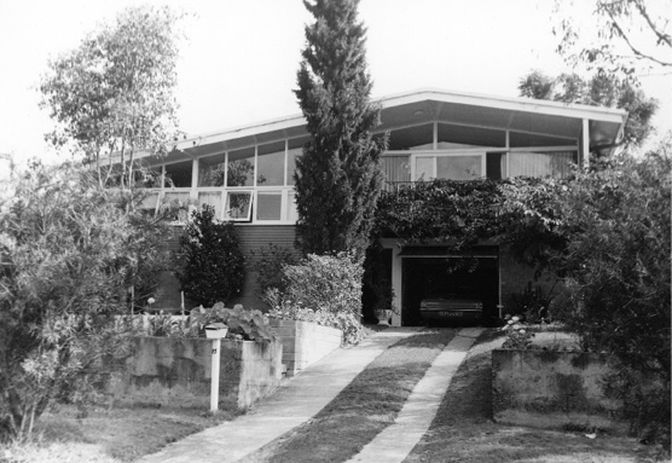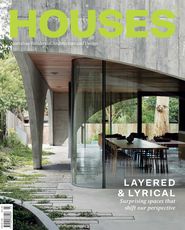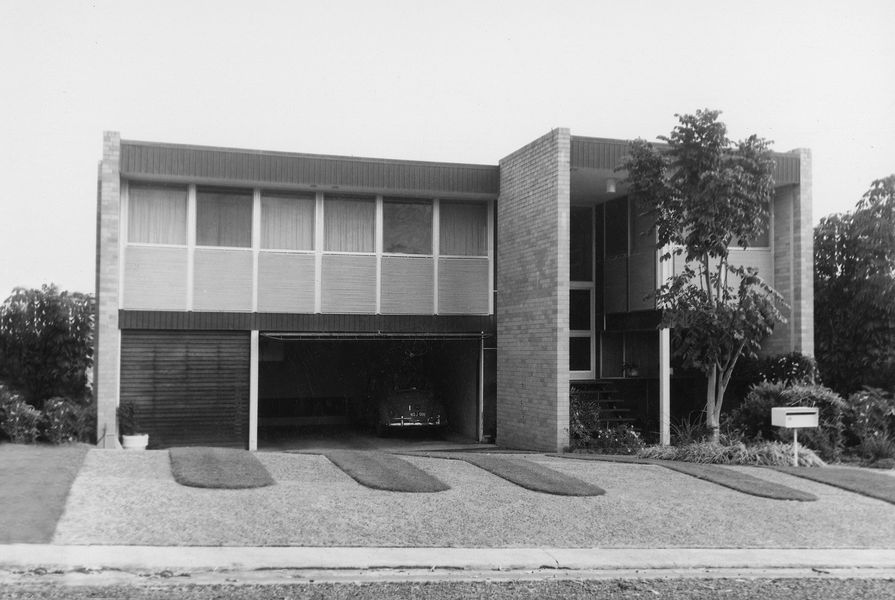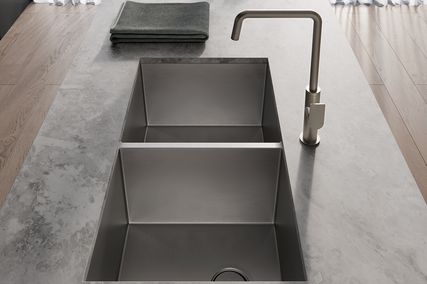All exhibitions have a starting point. In the case of the architectural exhibition Home: A Suburban Obsession, it was the 1995 donation to the State Library of Queensland of more than 60,000 discarded prints, rescued from the under-house of husband-and-wife photographic team Frank and Eunice Corley. Crafting a meaningful exhibition with these images, celebrating “the allure of home and the stories found within,” is nothing short of triumphant.
The Corleys’ Pan-American Home Photographic Co. operated in South East Queensland in the late 1960s and ‘70s. The 60,000-plus prints are the unsold remains of some 250,000 photographs of houses taken with Frank’s Leica camera. He’d trawl the suburbs in his pink open-top Cadillac, precariously but expertly “steering with his knees.” Eunice, ensuing in their Bedford van photographic laboratory, developed postcard-sized black-and-white photographs, for sale door-to-door as standalone images, greeting cards or calendar inserts.
The serendipity of collection and the engendered community outreach make the exhibition extraordinarily compelling. Prints were found sans negatives and paper-work, boxes exiguously marked only with spool identifiers, linking images with general locations. After Frank and Eunice were deceased; the only surviving connection was Doug Spowart, gallery owner and Leica agent, who had persuaded Frank to donate the collection to the State Library of Queensland’s (SLQ) John Oxley Library. SLQ volunteer and former CSIRO scientist, John Wilson, took on decryption of the photographer’s idiosyncratic organizational code, eventually enlisting friends to identify houses.
Co-curators Adam Jefford and Chenoa Pettrup of SLQ worked with the Annerley-Stephens History Group and the University of Queensland’s Architecture Theory Criticism History Research Centre to weave together notable stories. But the Corley Explorer, the collection’s digital database, also offers the opportunity for users to inscribe their own detective toil to the growing knowledge base: add a house number, street name or details of construction materials, or embellish the entry with a story. As beautiful as the images are, they hauntingly recall a time of scant vegetation. Intriguingly, glimpses of habitation are rare – perhaps a tricycle or coiled hose in the driveway – and people are notably missing, as if portraying a suburban ghost town.

The exhibition consists of three parts: the Corley Story fleshes out the astonishing narrative behind the material within historical and geographical contexts; Recreating House exhibits commissioned creative responses to the Corley Collection from artists Muge Belek and Frederico Fialho Teixeira, Jennifer Marchant, Ian Strange and Seth Ellis; and Recollecting Home reveals narratives of homes (within the Corley Collection) while disseminating the house typology of the Queenslander, paying respect to the brick, fibro and the “not” Queensland house. The exhibition arrangement is almost entirely mono- chromatic, with perimeter walls of the gallery blackened and the floor space punctuated with freestanding white walls for containment, and a rare splash of orange for accentuated spectacle. Thousands of black-and-white postcard-sized prints line the entry, reaching from floor to ceiling.
But the real showstopper is the Corley Explorer and the potential it offers, limited only by Queenslanders’ ongoing obsession with their suburbia of the late 1960s and ‘70s. Home: A Suburban Obsession was held in March as part of the Asia Pacific Architecture Forum and continues at the State Library of Queensland until 14 July 2019.
More than 60,000 photographs from the 1960s and ‘70s, taken by an entrepreneurial husband-and-wife team, have been collated by the State Library of Queensland to form an exhibition that continues the couple’s suburban obsession.
Source

Discussion
Published online: 10 Sep 2019
Words:
Alice Hampson
Images:
Frank and Eunice Corley
Issue
Houses, June 2019

















